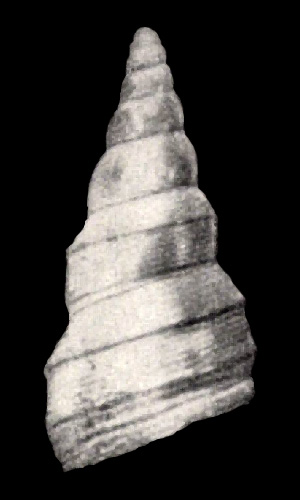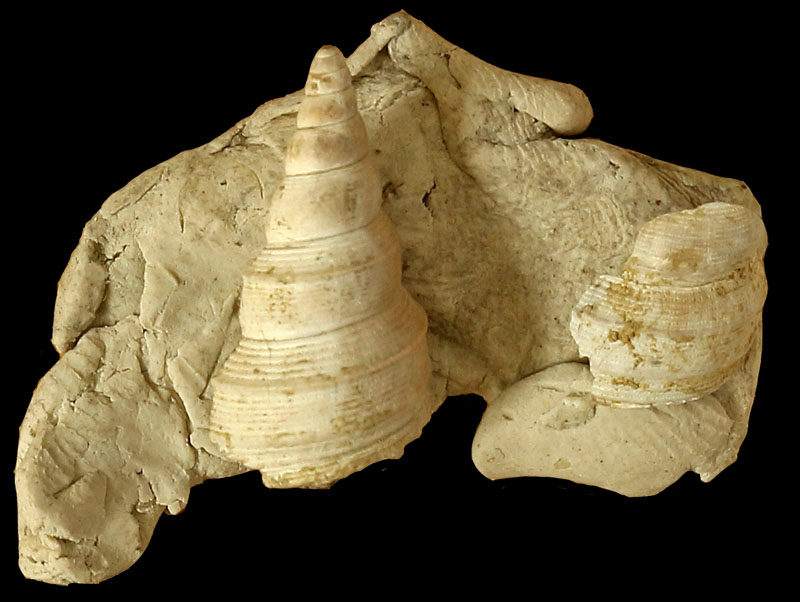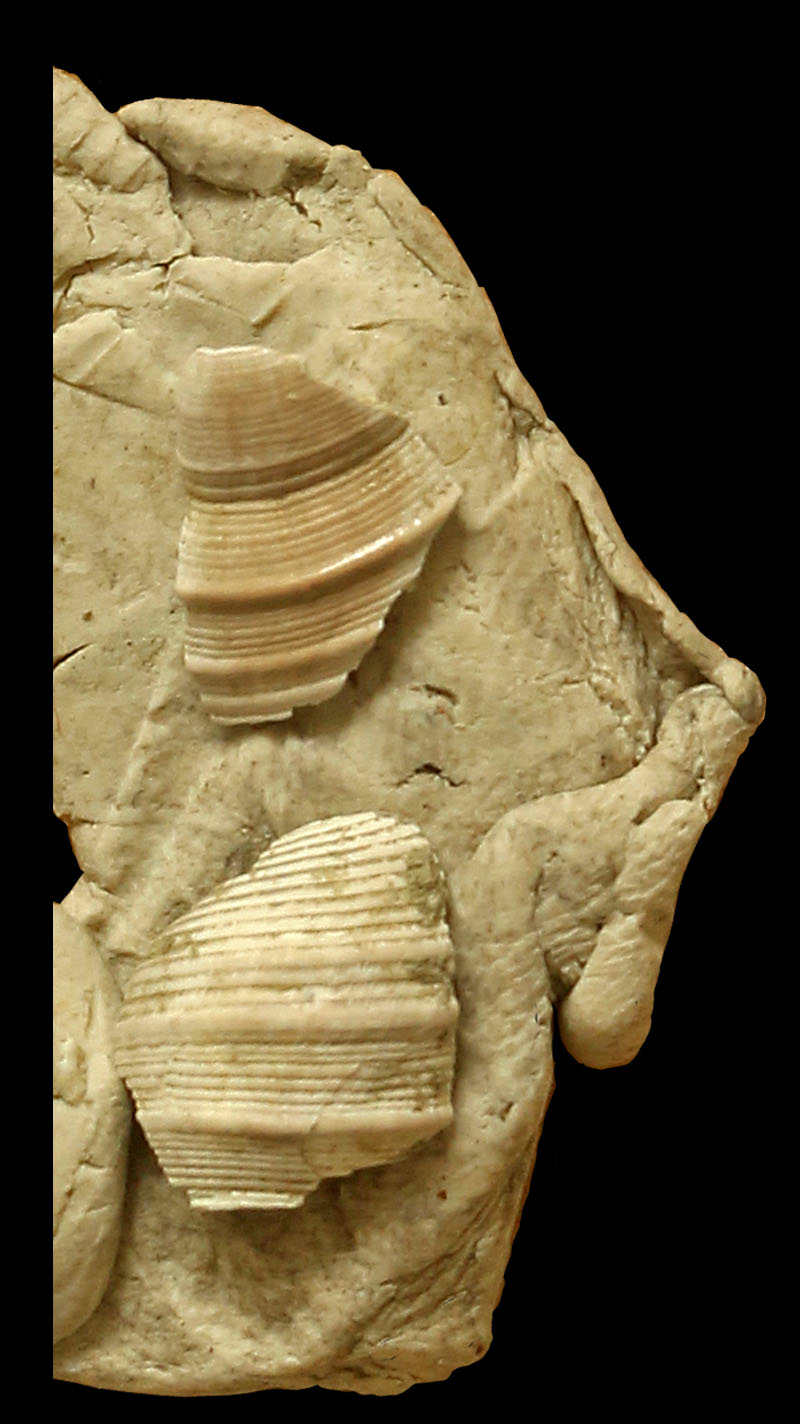Species / Sulcogladius Bicarinata
Stromboidea
Comment Wieneke
- Rostellaria bicarinata Baldi, 1966 is a homonym of Rostellaria bicarinata Deshayes in Leymerie, 1842
Original Description of Rostellaria bicarinata by Baldi, 1966:
- "Protoconch vollkommen glatt, aus 5 Windungen. Die ersten zwei Windungen des Teleoconchs sind ein bischen konvex, und dann tritt, stufenweise stärker werdend, die charakteristische Verzierung auf: 12 bis 14 schmale Spiralfurchen, in denen mit regelmässigen Abständen winzige, runde Grübechen auftreten, und die voneiander durch breite, sehr flache Rippen getrennt sind. Die uns zur Verfügung stehenden 2 erhaltenen letzten Windungen des Teleoconchs sind eckig. Etwa über der Mitte läuft die eine spirale Carina, während die andere sich unmittelbar über der adapikalen Nahtlinie befindet. Auf den beiden Carinae zieht sich eine sehr starke Rippe hin. Im übrigen ähnelt die Verzierung derjeniger der ersten zwei Windungen des Teleoconchs, nur sind die Furchen breiter, wodurch die Grübchen parallel mit den Wachstumslinien verlängert werden."
Locus typicus: "Windsche Ziegelei", Eger, Heves County, Hungary
Stratum typicum: "Molluskenton", Egerian (Chattian), upper Oligocene
Etymology: bicarinata = has two carinae
Rostellaria bicarinata Baldi, 1966, pl. 4, fig. 5
Rostellaria bicarinata Baldi, 1966, holotype; Egerian, Eger Formation, Chattian, Oligocene; Wind brickyard, Eger, Hungary; Magyar Természettudományi Múzeum NMHUS M. 65.1087
Rostellaria bicarinata Baldi, 1966, paratypes; Egerian, Eger Formation, Chattian, Oligocene; Wind brickyard, Eger, Hungary; Magyar Természettudományi Múzeum NMHUS M. 83.57
History and Synonymy
1973
Baldi, 1973, p. 271 about Rostellaria bicarinata:
- "The entire smooth protoconch comprises 5 whorls. The first two whorls of the teleconch are slightly convex, with a gradually emerging typical ornament: 12 to 24 narrow spiral grooves with small round regularly spaced pits in them, separated by broad, very flat ribs. The lasttwo whorls on the teleoconch at our disposal are angular. Slightly above the median line of the whorls there is one spiral keel; another runs immediately above the abapical suture. Both keels bear a strong spiral rib. The ornament is otherwise much the same as on preceding whorls of the teleoconch, but the grooves are wider, which entails a collabral elongation of the small pits.
- Dimensions. Height: 19 mm; diameter: 9 mm (fragmentary specimen).
- The species of this form circle belong to the deeper Oligocene. R. bicarinata differs from the species R. hungarica Noszky, 1940 (Kiscell clay) and R. excelsa Giebel, 1864 and R. haueri Dreger, 1892 (Häring beds) in the angular outline of the last whorls and in its two strong siral ribs. Known exclusively from deep sublittoral - shallow bathyal deposits. Hungarian Upper Oligocene occurences: Eger-1/6, Ostoros-1 (Kerek Hill).
- Distribution: not known from any other locality so far."
References
- Baldi, T. 1966. Die oberoligozäne Molluskenfauna von Eger und die Neuuntersuchung der Schichtfolge; A.. Mus. Nat. Hung., 58, 69-101.
- Baldi, T. & Radocz, G. 1971. Die Stratigraphie der Egerien- und Eggenburgien-Schichten zwischen Bretka und Eger; Földtani Közlöny, Bulletin of the Hungarian Geological Society 101: 139-159.
- Báldi, T. 1973. Mollusc Fauna of the Hungarian Upper Oligocene (Egerian) Studies in Stratigraphy, Palaeoecology, Palaeogeography and Systematics. Akademiai Kiadó, Budapest, 511 pp.



